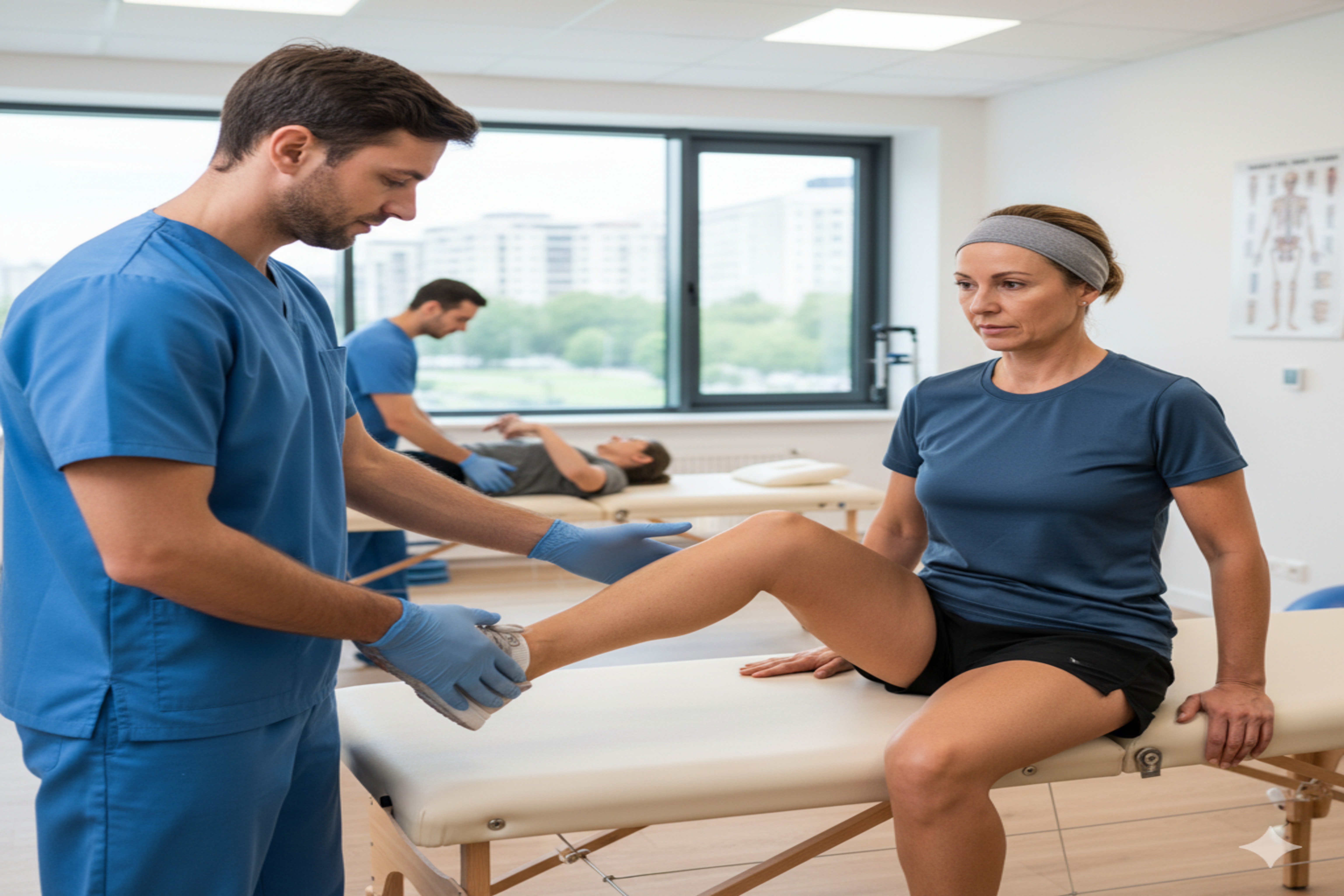
Post-Surgery Recovery: How Physical Therapy Speeds Up Healing
Surgery is often the first step toward healing — but what comes after plays an equally important role in your recovery journey. Whether it’s a knee replacement, rotator cuff repair, or spinal surgery, one of the most effective ways to regain strength, mobility, and confidence is through physical therapy.
At NJ Rehab Experts, our post-surgical rehabilitation programs are designed to help patients recover faster, move better, and live pain-free — without complications or setbacks.
Physical therapy bridges the gap between surgery and full recovery by restoring proper movement, improving flexibility, and preventing long-term stiffness or pain.
Why Post-Surgery Physical Therapy Matters
After surgery, your body needs time to heal — but immobility can lead to weakness, scar tissue buildup, and joint stiffness.
That’s where physical therapy steps in. By starting rehabilitation early (as recommended by your surgeon), you help your body:
Heal faster and more efficiently
Regain normal movement patterns
Reduce pain and swelling
Rebuild muscle strength and coordination
Avoid complications like stiffness or re-injury
The goal is not just to recover — but to return to your daily life stronger and more mobile than before.

How Physical Therapy Helps After Surgery
Every recovery journey is unique. At NJ Rehab Experts, our therapists design a customized rehabilitation plan tailored to your type of surgery, recovery goals, and comfort level.
Here’s how physical therapy supports post-surgical healing:
Restores Mobility and Range of Motion
After surgery, joints and muscles can become stiff due to inactivity. Gentle stretching and joint mobilization help restore flexibility and prevent long-term limitations.
Strengthens Muscles and Tissues
Weakness is common after surgery, especially in the affected area. Targeted exercises rebuild strength to support healing structures and improve stability.
Reduces Pain and Swelling
Through techniques like manual therapy, electrical stimulation, cold therapy, and dry needling, PT helps manage inflammation and pain naturally.
Improves Circulation and Healing
Movement boosts blood flow and oxygen supply, helping tissues repair faster and reducing the risk of scar tissue adhesions.
Retrains Movement Patterns
Physical therapists teach your body how to move correctly again — improving balance, coordination, and posture to avoid compensatory strain on other areas.
Common Surgeries That Benefit from Physical Therapy
At NJ Rehab Experts, we work closely with surgeons and patients to optimize recovery after:
Total knee replacement (TKR)
Total hip replacement (THR)
Rotator cuff repair
ACL or meniscus repair
Spinal fusion or laminectomy
Wrist, elbow, or hand surgery
Fracture fixation or orthopedic trauma
Each program is customized to your stage of healing — from early mobility work to advanced strengthening and balance training.
Stages of Post-Surgery Physical Therapy
Phase 1: Acute Recovery (0–2 Weeks)
Focus: Pain relief, swelling control, gentle mobility
Ice and elevation
Soft tissue massage
Light range-of-motion exercises
Phase 2: Early Rehabilitation (2–6 Weeks)
Focus: Restoring mobility and preventing stiffness
Assisted stretching
Low impact strengthening
Gait training
Phase 3: Strength & Endurance (6–12 Weeks)
Focus: Building strength and coordination
Resistance exercises
Balance and proprioception drills
Posture correction
Phase 4: Return to Function (3+ Months)
Focus: Getting back to normal activity and performance
Sport- or job-specific training
Pain-free mobility testing
Home exercise progression
Your therapist will guide you every step of the way to ensure you recover safely, effectively, and confidently.
The Science Behind Movement and Healing
Early, guided movement helps your body stimulate collagen production, improve blood flow, and reduce inflammation.
Physical therapy also prevents muscle atrophy (weakening due to inactivity), ensuring that the muscles supporting your healing area remain strong and stable.
The result?
Faster recovery, better flexibility, and lower risk of long-term complications.
Techniques Used in Post-Surgery Rehabilitation
At NJ Rehab Experts, we combine modern and manual therapy techniques to optimize healing:
Manual therapy for mobility and scar tissue release
Dry needling for muscle tension relief
Electrical stimulation and ultrasound therapy for pain control
Therapeutic exercise for strength and endurance
Gait and balance training for stability
Posture correction to prevent compensatory strain
Each technique is carefully integrated based on your type of surgery and healing stage.
Real Patient Success Story
A patient recovering from rotator cuff surgery came to NJ Rehab Experts with severe stiffness and shoulder pain.
Through a tailored plan including manual therapy, gentle stretching, and dry needling, they regained 90% of their mobility within just 8 weeks — returning to work and exercise safely.
This is the power of guided physical therapy — targeted movement designed for healing.
Why Choose NJ Rehab Experts for Post-Surgery Recovery
At NJ Rehab Experts, we combine advanced techniques with personalized care to ensure you heal completely and confidently.
Licensed, highly trained physical therapists
State-of-the-art rehabilitation technology
Customized recovery programs
Collaborative care with your surgeon
Compassionate support throughout every stage of healing
Our goal is simple: help you recover stronger and faster — so you can get back to doing what you love.
Visit: https://njrehabexperts.com/
Call: (212) 227-3233
Email: [email protected]
